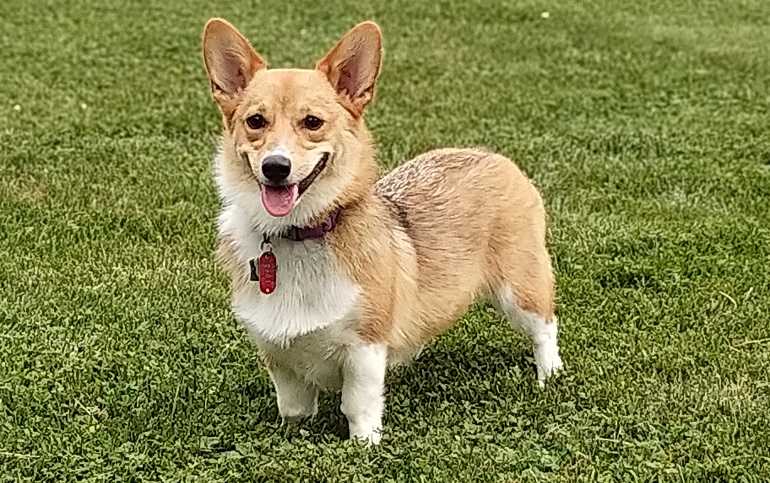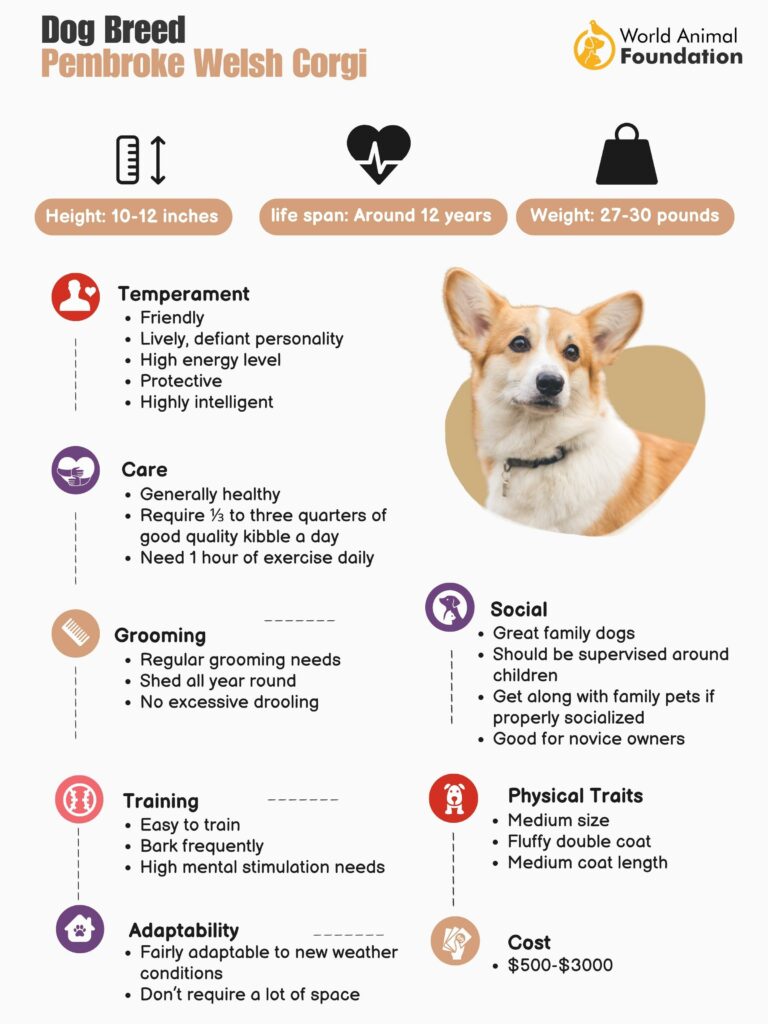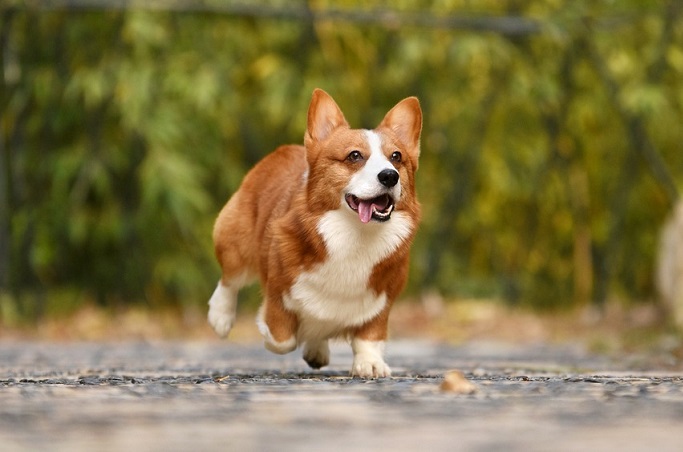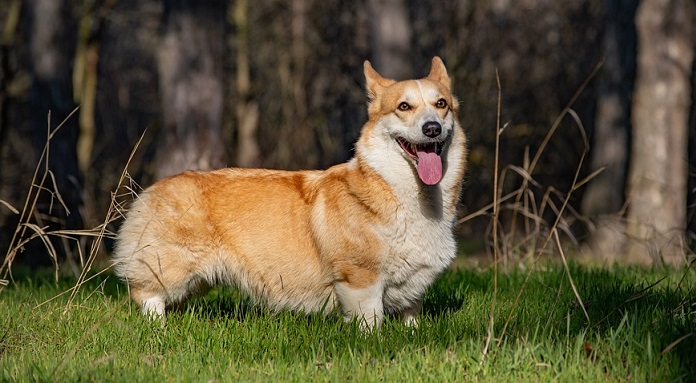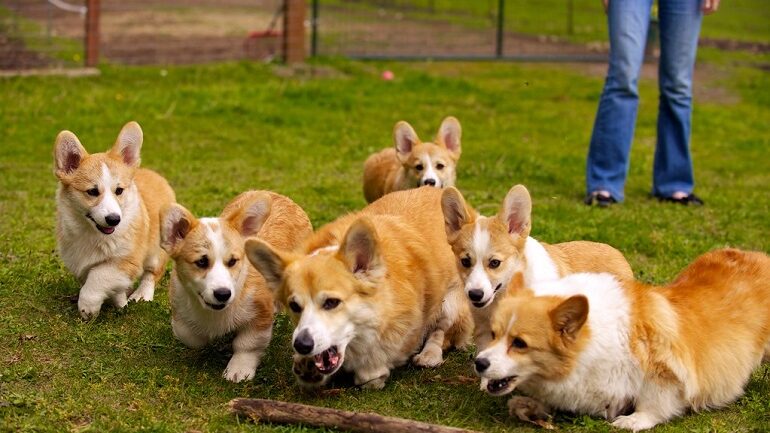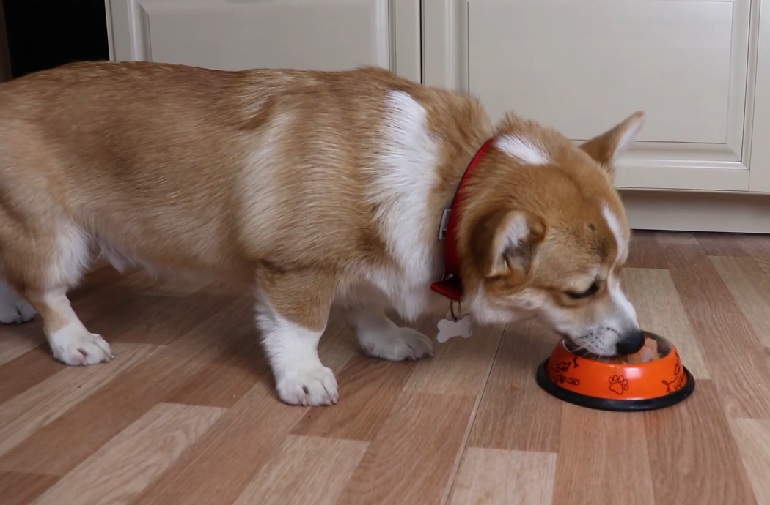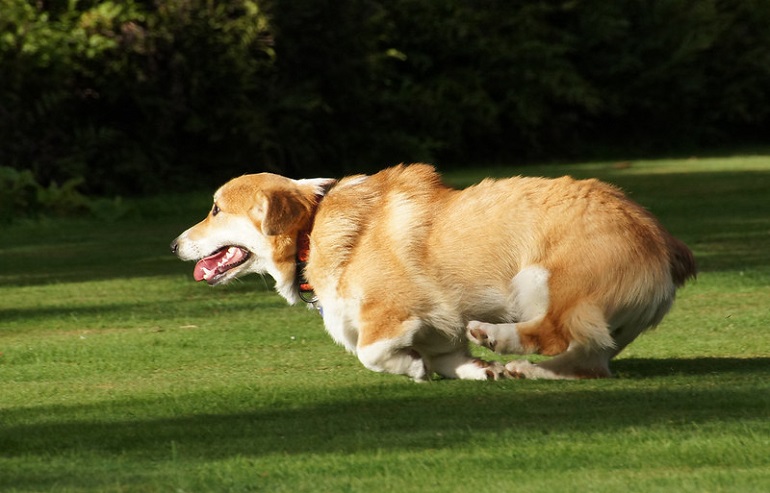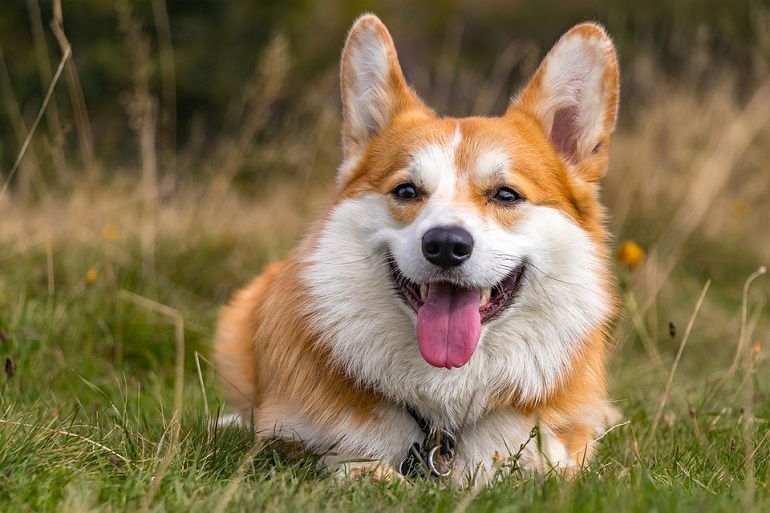The Pembroke Welsh Corgi, with its fox-like face and endearingly short legs, boasts a rich history intertwined with Welsh folklore and royal patronage. More than just a charming appearance, these intelligent and affectionate herding dogs possess distinct traits that make them beloved companions. Understanding their unique needs, from exercise requirements to potential health concerns, is crucial for responsible ownership. This guide delves into the fascinating history, characteristic traits, potential health issues, and essential care tips for ensuring a happy and fulfilling life for your Pembroke Welsh Corgi.
The Pembroke Welsh corgi is the dog of kings or, rather, queens. These adorable herding dogs have long been firm favorites of Queen Elizabeth II. Since they are cute and cuddly, few people can imagine these dogs as herding dogs, bred to herd cattle, sheep, and even other livestock.
My first encounter with a Pem, or Pembroke Welsh corgi, was on my way to the dog park. A very nice lady led her neatly bathed and groomed Pem out of the local dog parlor, and I was amazed by the unique clipped heart on the dog’s bum!
Yep, Pembroke Welsh corgis are renowned for their agreeable and playful but feisty nature, and they love being adored.
When I finally got my first registered Pembroke dog, I was blown away by their amazing and warm personality, eagerness to please, and how well they adapt as family pets. But before you rush out and get your own Pembroke Welsh Corgi and enter puppyhood, let me tell you a bit more about this gorgeous breed.
Vital Records
The Pembroke Welsh corgi is one of two Corgi breeds; the other breed is the Cardigan Welsh Corgi. Pembroke’s vital statistics are as follows:
- Height: 10-12 inches at the shoulder
- Weight: Less than 30 pounds
- Life Expectancy: 10-12 years
- Energy Level: Moderate to high energy levels; requires frequent exercise
- Trainability: Highly trainable
- Dog Type: Herding dogs
- Shedding: Moderate to severe, depending on seasonal shedding
- Breed Status: Recently removed from the “at risk” list with a gradual increase in breeding registrations
About the Breed
The Pembroke Welsh Corgi is one of the oldest English breeds. While their history is unique, if somewhat steeped in myth, the dog is said to have been bred in England during the 10th, 11th, or 12th centuries, using different dog breeds to create a good working dog.
The goal of breeding the Corgi dogs was to create perfect working dogs that could help herd cows across rugged terrain and be a suitable companion. Initially, the Pembroke Welsh Corgi was not recognized as a breed on its own, and it was simply called Welsh Corgis (along with the Cardigan Corgi).
Today, Pembroke Welsh Corgis are popular pets in the U.S., and they still help out on sheep farms in England. The Pembroke’s herding instincts make them active pets and they are known to chase anything that moves (including your ankles).
Pembroke Welsh Corgis are energetic dogs that require enough exercise to stop them from becoming obese. Being highly intelligent, this dog breed requires sufficient mental stimulation to keep them interested and prevent boredom-related misbehavior like digging.
The Pembroke has a double coat, which means they shed most of the year, so they’re not exactly maintenance-free. And while they are robust dogs, they’re also prone to spinal cord injury due to their elongated spine (in proportion to their short, sturdy legs).
I’ve since discovered that Pembroke Welsh Corgis make excellent support dogs for those with mental health challenges, especially since they require exercise and motivate their owners to take them to the park daily.
According to the American Kennel Club, Pembroke Welsh Corgis can have a naturally long tail or traditional docked tails. The tail is cut short during puppyhood to a length of two inches.
Due to a decreased interest in the breed (perhaps due to the ban on tail docking in the U.K.), the breed was considered vulnerable and placed on the breeders’ association watchlists to try and foster a renewed interest in Pembroke Welsh Corgis.
Fortunately, the Pembroke is a big dog breed in a little package. Due to their huge personality, the American Kennel Club indicates they’ve become one of the popular breeds again.
History of the Pembroke Welsh Corgi
Very few records were kept about how the breed originated, which is why myth jumped in and created perhaps one of the most beautiful tales of how the Pembroke Welsh Corgi came to be.
According to the legend, the Pembroke Welsh Corgis were used as mounts for the Welsh fairies, who used to ride their doggy “steeds” into battle.
Today, the Pembrokes are still special, and there’s an area of raised fur behind their withers, known as a fairy saddle, where the fairies used to sit when they rode their trusty dogs.
Of course, there’s no way to prove this myth (even if you believe in fairies, which I do). But historical records offer a more factual account of the origin of the Pembroke Welsh Corgi.
The Pembroke Welsh Corgi is said to originate from Pembrokeshire in Wales. Of course, the Cardigan Welsh Corgis have a similar appearance.
In 1920 the two breeds were considered similar enough to register as the same breed by the National Breed Club, and in 1934, the Pembroke Welsh was registered as a separate breed. It was only in 1959 that the United Kennel Club recognized the Pembroke Welsh breed.
The original dog breeds used to create the Pembroke Welsh Corgi were said to have been imported by Flemish weavers. While others indicate the Vikings contributed their Swedish cattle dogs, some say the Swedish spitz dogs were included in breeding the Pems.
The fact that Queen Elizabeth 2 was given a Pembroke Welsh Corgi by her father (King George VI) in 1933 may have also swayed the UK Kennel Club to consider the Pembroke special enough to stand as a breed on its own.
But I can only speculate on that.
Either way, the Pembroke Welsh Corgi gained popularity in history and a place at Buckingham Palace.
Corgi Breed Physical Traits and Characteristics
The Pembroke Welsh Corgi and the Cardigan Corgi are two separate breeds with similar builds, and these short-legged, sturdy dogs are built for speed over rough terrain when herding livestock. However, there are a few significant differences that set the Pembroke apart from the Cardigan Corgis.
Pembroke Welsh Corgis have red, fawn, brown, or tri-colored (black, tan, and red) coats. The Pembroke Welsh Corgi has a scruff that runs across its wither, called the fairy saddle, created by a change in the direction of hair growth.
The white markings on their legs and chest are also unique to the Pembroke. The shoulders next to the central wither tend toward lighter coat colors.
Another breed-specific characteristic is the docked tail which was a breed standard until the banning of tail docking in the U.K. It caused the U.S. and U.K. Kennel Club to accept a natural, long tail when showing too.
Historically, tails were docked to show that Pembroke was a working dog breed and to avoid luxury tax.
Pembroke Welsh Corgi Appearance
The Pembroke Welsh Corgi’s striking features make them real showstoppers. I adore their triangular, foxlike face, the rounded point of their erect ears, and the white blaze that some have on their faces.
Their dark, clever eyes never miss a thing, and you can be assured these dogs will alert you as soon as their keen, upright ears hear anything out of the ordinary.
The Pembroke’s medium-length weatherproof double coat gives them a soft, fluffy appearance, and first-time Corgi owners need to prepare for their grooming requirements and endless shedding. However, their thick coat keeps them clean, and if well-groomed, they don’t need regular bathing.
Pembroke Welsh Corgis are born with a regular long tail, but the breed standard had been to dock the tail at a young age, creating the stubby, round-butt appearance that people clipped into the heart-shaped butt that I saw on that first Pembroke.
Size
The Pembroke Welsh Corgi is a medium size dog breed with a rounded but elongated body on short, stubby legs. Their short legs tend to be somewhat straighter than other short-legged dogs.
Weight
Pembroke Welsh Corgis tend to become overweight or obese very quickly as they have a substantial appetite. Being overweight can lead to health problems, so try to maintain your Pembroke’s weight between 27 and 30 pounds with the right food.
I check my Pembroke by placing my hands on either side of their spine. I should be able to feel their ribs, but the ribs mustn’t show through the fur (or make rib shapes). My dog also has to have the hint of a waist just in front of their rear legs.
When overweight, a Pembroke may suffer severe health issues such as arthritis, muscle atrophy, and inflammation.
Coat
A Pembroke Welsh Corgi is renowned for their fluffy coat. To keep them neat and to stay ahead of the shedding, I groom my red-coated Corgi with a slicker brush and a comb. This is usually enough to remove dead hairs that shed all year round.
Regular bathing is not needed to keep the Pembroke clean, but it does help reduce severe shedding in autumn and spring. Being double coated, clipping their coat is not advised, and the Pembroke Welsh Corgi adapts easily to new climates, even warmer ones.
Color
I have a red-coated Pembroke, but there are also tan, fawn, and tri-colored coats with characteristic white markings on their legs, chest, belly, and neck. There are usually also white splashes on their faces, making them the real characters adored by the Pembroke Welsh Corgi Club in New York City.
Pembroke Welsh Corgi Temperament and Personality
The Pembroke Welsh Corgi dog is a great family dog, but they don’t get along as well with other pets as most dogs do. With their keen intelligence, the Pembroke has a cheeky and slightly defiant nature that requires obedience training to manage and avoid dog aggression.
With their fairly high energy levels, my Pembroke loves his harness and insists on daily exercise to help him blow off steam. Despite being fairly little dogs, the Pembroke enjoys the outdoors, where they can run and fetch things for their human family—their herding instinct is very strong.
When correctly socialized with other dogs and people from an early age, the Pembroke Welsh will adjust easily and be less prone to snapping or ankle-biting (behavior they instinctively do with cattle). Because of their big personality and fierce temperament, Pems have grown in popularity over the last few years.
Corgi Health and Care
Pembroke Welsh Corgi dogs aren’t sickly by nature, but with inbreeding, some genetic issues have cropped up that may need to be carefully checked before you purchase puppies or decide to breed your own Pem and register them with the American Kennel Club.
Some health problems that Pembrokes are known for include:
Hip Dysplasia
When the thigh bone doesn’t “seat” quite as snuggly as it should in the hip capsule, the joint may slip out, affecting the rear legs. Confirm the absence of the condition in breeding pairs before you buy a puppy, as there’s no cure for the condition, which is often hereditary.
Epilepsy
Pembrokes are known to develop a neurological condition that results in epilepsy. Fortunately, the prognosis for this condition is not as dire as before, and with the correct medication, the condition can be managed, but breeding a dog with this condition is not advised.
Cataracts
When dogs develop a glazed and milky appearance to their eyes, it usually indicates the formation of cataracts.
If your Welsh Corgi has been diagnosed with cataracts, they will need treatments and surgery to prevent total blindness. Excessive sun exposure can worsen the condition, so provide shelter and shade.
Degenerative Myelopathy (DM)
The unique longer back of the Pembroke Welsh Corgi dog breed often damages the nerves along the spinal cord, causing weakness and muscle atrophy that can lead to lameness and paralysis over time.
Some genetic markers may indicate your dog is more likely to develop the condition, so get a vet report from a breeder before buying a puppy.
Hypothyroidism
If you are feeding your Pem appropriately and ensuring they get loads of exercise, but they continue gaining weight and are verging toward obesity, you may need to have a thyroid panel done by your vet as your Corgi may have hypothyroidism. Specialist diets and medication may be required to manage this condition.
Von Willebrand’s Disease
I realized something was wrong with my Pem when I had him neutered at three, and the vet informed me that my puppy had lost a lot of blood. Neutering is a standard procedure with minimal bleeding, but my dog had a problem with blood clotting. Pems are prone to clotting disorders.
A couple of tests confirmed a diagnosis of Von Willebrand’s. This clotting disorder means my dog would struggle with clotting, and I have to be careful he doesn’t sustain an injury as he could bleed to death.
Fortunately, my vet knows, and he quickly treats my Pem for any bleeding injuries and cauterizes any cuts immediately.
Skin Conditions
Corgis are double-coated, which means owning one comes with grooming chores. You should groom them every couple of days, and they should be checked weekly for any signs of injury, rawness, or infection from cuts or skin irritations. Keeping their nails short will also help limit any self-inflicted injuries.
When I hear my Pem clicking down the passageway at home, I take out my nail clippers as his nails are then too long. I also check my Pembroke’s ears every week for signs of infections.
Corgi Dogs Food and Diet
Your Pembroke Welsh Corgi dog requires a diet that matches its level of physical activity.
If your Pem is a couch potato, you’d want to choose a high-quality dog food that’s low in calories and weigh their food to ensure they only get fed enough to maintain body weight and not add on pounds. Your Corgi shouldn’t turn into a porki.
Depending on your Pem’s health conditions, you may also want to opt for a specialized food that’s grain-free and vitamin rich to help care for your dog’s eye and ear health.
Never leave a self-feeder in charge of your Pembroke Welsh’s diet or feeding routines. Rather, feed a small meal they can finish in one sitting, and a fresh-food or raw food diet may be an ideal choice.
Corgis Training and Exercise
Corgis are great at agility courses and love the challenge and mental stimulation. While they can’t jump high, they love wiggling through tunnels, herding moving objects (and people), and running at speed to a target. Exercise is great for maintaining healthy joints and an ideal body weight.
My Corgi puts on weight faster than I do when he spends too much time chilling with Netflix. Get active with your Pem, and you’ll both benefit.
Relationship with Family
Pembroke Welsh Corgi dogs are ideal pets for a family; even novice dog owners do well with them. However, Corgis aren’t always that great with other dogs, and depending on the breed of your other dogs, your Pem may fight or become aggressive and bite if not correctly socialized from an early age.
Children should be taught how to treat Corgis and be mindful because your Pem will chase after the kids when they run, grabbing ankles and causing them to trip. However, for slightly older kids, a Pem is a great family addition to your household.
Are Corgis Dwarf?
Pembroke Welsh Corgi dogs have a condition known as achondroplasia, which causes true dwarfism. This condition explains why they have such short legs that are much more muscular and thicker than other dogs like Dachshunds.
Conclusion
I love my Pembroke Welsh Corgi dog. He’s a truly fun character, loves to romp about outdoors, and at the end of a long day, he’s quite happy to snuggle down on his special pillow by my feet while I watch my favorite dog shows.
My Pem is happy running about the homestead where I live with my other animals since he was correctly socialized from a young age.
And he gets along with most breeds of other dogs, though I have to take care with the slightly larger dogs (like my Belgian Malinois) so they don’t hurt his back during playful behavior.
Whenever there’s a “big dog” barking, I know my Pem is leading the canine choir.
The Pembroke Welsh Corgi, with its charming short legs and fox-like face, boasts a rich history as a herding breed. Their intelligence, playful nature, and adaptability make them excellent companions. While generally healthy, Corgis are predisposed to certain conditions like back problems and hip dysplasia. Responsible ownership involves providing a balanced diet, regular exercise, and attentive grooming to ensure these spirited dogs live long, happy, and healthy lives. Prospective owners should be prepared for their affectionate, sometimes stubborn, but ultimately lovable personalities.


